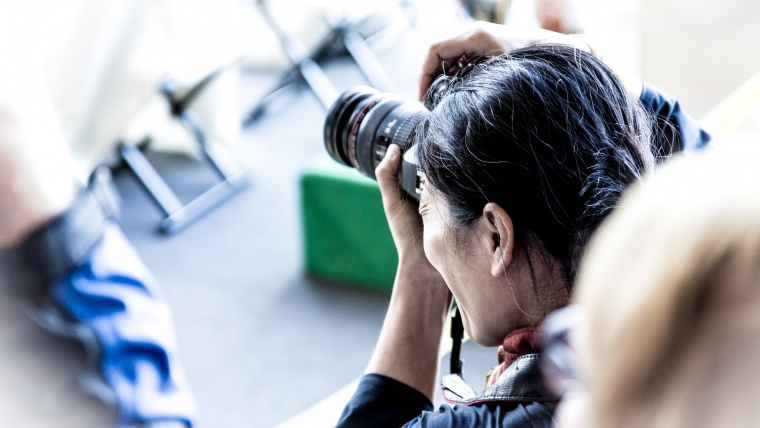
In the article, I will discuss what is needed to be a professional photographer, i.e. what changes when you start charging money for your photography services. Even if you are not a full-time photographer, but planning to do photography as a paid side job, there are some changes compared to being an amateur hobbyist.
Table of Contents
When offering services for money, you must know your price. There will be queries how much you charge for a certain job. If you have well defined and thought pricing model, it is easy to give the answer. If you don’t know your price and need to start pondering and guessing when the unexpected query arrives, it will give a very unprofessional impression. The pricing may be a slightly challenging task. If your living does not depend on your photography earnings it is tempting to have low prices. However, pricing is also a part of marketing and branding. The price you give will have an impact on how others perceive your skills and also what kind of assignments you will get. Low price tells that you do not value your services, and others will not either. Higher price tells that you are skilled professional who knows what you are doing. However, your price should match the level of service customers are getting.
Another aspect of pricing is that too low prices will be frowned upon by fellow photographers. They do not like if someone is lowering the general price levels. On the other hand, extremely high prices with low-quality portfolio will also have a negative impact.
Well, what is the correct price level then? There is no correct answer, but common guidance is that know your own expenses and know how much you value your time and skills. Also, know how much others are charging for similar services. Then decide some pricing. You may change the prices later as your career progresses, but you must have a planned answer to start with.

In addition to the price, you need to understand what kind of services you will offer. Customers will ask what they will get for the given price. You must know how much time the photoshoot will take, how many photos customers will get, how you deliver the photos, etc. Moreover, you must know what kind of assignments you can do with your skills and equipment. You must also know that what kind of assignments you will not do due the lack of skills, equipment (or interest).
As a professional, you should know the principles of photography and also at least the basics of different types of photography. Even if there are some specific types of photography, which you do not practice, it is expected that you are at least familiar with the concepts and what is needed to do different types of photos. This also helps to define the services which you do and which you do not. There will be queries to do some standard type of photos. These may be graduation/senior pictures, wedding portraits, CV photos, passport photos etc. You should be familiar with the concepts and trends on these if you are going to do them.
Having a portfolio available is essential. It serves for marketing purposes and also gives an idea of what to expect when paying your price. A professional without any portfolio does not sound convincing.
As a professional, you must be able to execute and deliver a good photo from every assignment you take. You must deliver even if the circumstances are not optimal; if you are little sick, the weather is not optimal, some of the equipment malfunctions, location is different than you expected, your personal life has some crisis etc. When you deliver photos, customer needs to immediately see from the photos that they were taken by a professional. Taking the circumstances into account they should be better than if they had asked their amateur relative to take the shots for free with a compact camera.
This is actually one of the biggest changes when going pro
. Paid assignments will usually be much more stressful that just shooting for fun. Especially during the beginning of your professional career you will constantly ponder that are you doing good enough job for the price they pay. When the agreed assignment is approaching you will ponder whether you are able to deliver what they are expecting. The amount of stress varies between individuals, but nevertheless, you must be able to handle your own stress level. Luckily, experience gives confidence, which reduces stress. So just go for the situations and you will gain confidence.
The pose of the model affects hugely the quality of the photo. Thus it is essential to understand modelling and posing. Moreover, many people expect that the photographer tells them how they should pose, so you must know how to guide them.
As a professional, you must handle the discussions about the assignments. You must also communicate during the assignment and during the delivery. All this communication must be handled in a professional way. The importance of professional communication increases if there are some conflicts with the customers.
When photographer arrives on the assignment, he/she is the one who is expected to be in charge on how the photo shoot is organized. He/she must be able to take the situation under control and tell everybody what to do.
One example of the needed interaction skills is the situation where you want to give some instructions of the clothing to the models. This needs to be done in a delicate way in order to avoid hurt feelings. Sometimes people want to wear that multicolored favorite dress, which is not flattering in photos. You need to have emotional intelligence to understand when and how to give instructions.
There are two reasons why professional photographer needs good gear. One is the fact that good enough equipment is needed so that you are able to deliver quality photos. Of course, it is not the equipment that takes the photos, but the skills of the photographer. However, equipment should not limit you from taking good enough photos from your assignments.
Another aspect is the image. If the photographer arrives on the scene with a low budget consumer equipment, it is not convincing. If you are a world class well-known the photographer, this may not be relevant. Otherwise, it is expected that a professional has professional equipment. However, there is no need to have the most expensive flagship model. Some decent semi-pro equipment should be enough if you are able to deliver good photos.
Nowadays it is expected that photographers know at least some basic retouching and postproduction skills. People are so used to seeing computer edited photos that photos without any postproduction rarely have enough wow-factor. Moreover, it is common that customers ask you to remove that pimple or similar. Computer skills are also needed for delivering the digital photos. It also helps if you are able to manage your own digital portfolio, possibly a web-site, social networking, marketing etc.
I have used wording “good enough” several times in this text. It is one aspect of professionalism to understand what is good enough. Sometimes you might want to achieve that perfect photo and do tens of hours of editing in front of the computer. However, if the assignment is for some photo that has been paid only for e.g. half an hour work, it may be not reasonable to spend hours and hours in the minor detail that no one notices. On the other hand, you must know when you are still under the bar and need to do more to get the photo to be good enough. For example, the expectation level for a wedding portrait is totally different than for a documentary photo. You must know the expectation level for different situations.
Comments (0)
There are no comments yet.